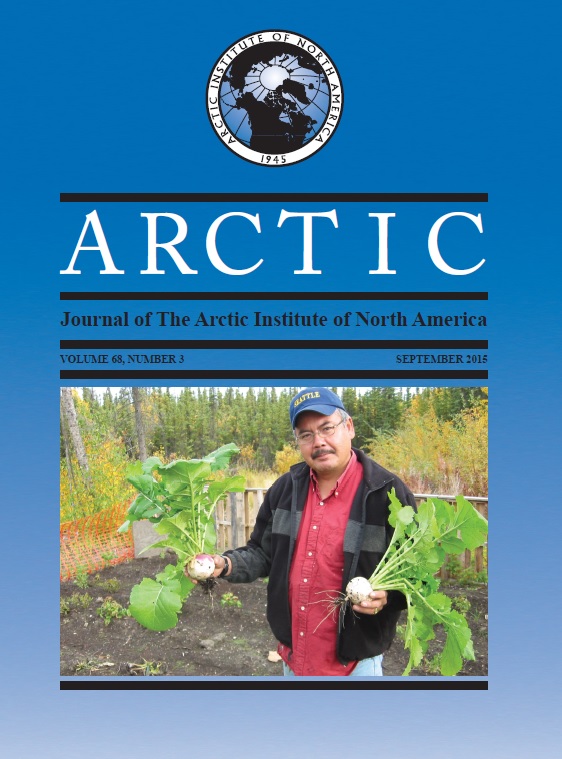Variation in Ringed Seal Density and Abundance in Western Hudson Bay Estimated from Aerial Surveys, 1995 to 2013
DOI:
https://doi.org/10.14430/arctic4503Keywords:
ringed seal, Pusa hispida, density, abundance, aerial survey, sea ice, Hudson Bay, declineAbstract
We conducted systematic aerial surveys of ringed seals along strip transects in western Hudson Bay (WHB), Canada, in late May to early June of 1995–97, 1999, 2000, 2007–10, and 2013. The density of ringed seals hauled out on ice over the entire study area ranged from 1.22 seals/km2 in 1995, to 0.20 seals/km2 in 2013. Density estimates varied significantly over the study period and, with the exception of 2013, appeared to follow a cyclical pattern. Although density estimates also appear to follow a downward trend over time, results of multiple linear regression, weighted by survey effort, indicated no significant trend in ringed seal density as a function of year, survey date, or proportion of open water. In addition, no significant correlation was observed among any of the environmental variables and density estimates. As the proportion of seals hauled out at the time of the survey is unknown, the density estimates of WHB ringed seals presented in this study should be considered indices that might be useful to explore trends in abundance. Although our results do not indicate that a significant decline has occurred, the low density estimate in 2013 may indicate that population changes unrelated to a natural cycle are taking place. We were unable to test for direct effects of changes in food supply or predation, but polar bears, Arctic foxes, and Inuit communities in the Hudson Bay region all would be negatively affected should ringed seal populations undergo significant declines. Further monitoring and directed research are necessary to understand what mechanism may be responsible for the observed changes in ringed seal density.


